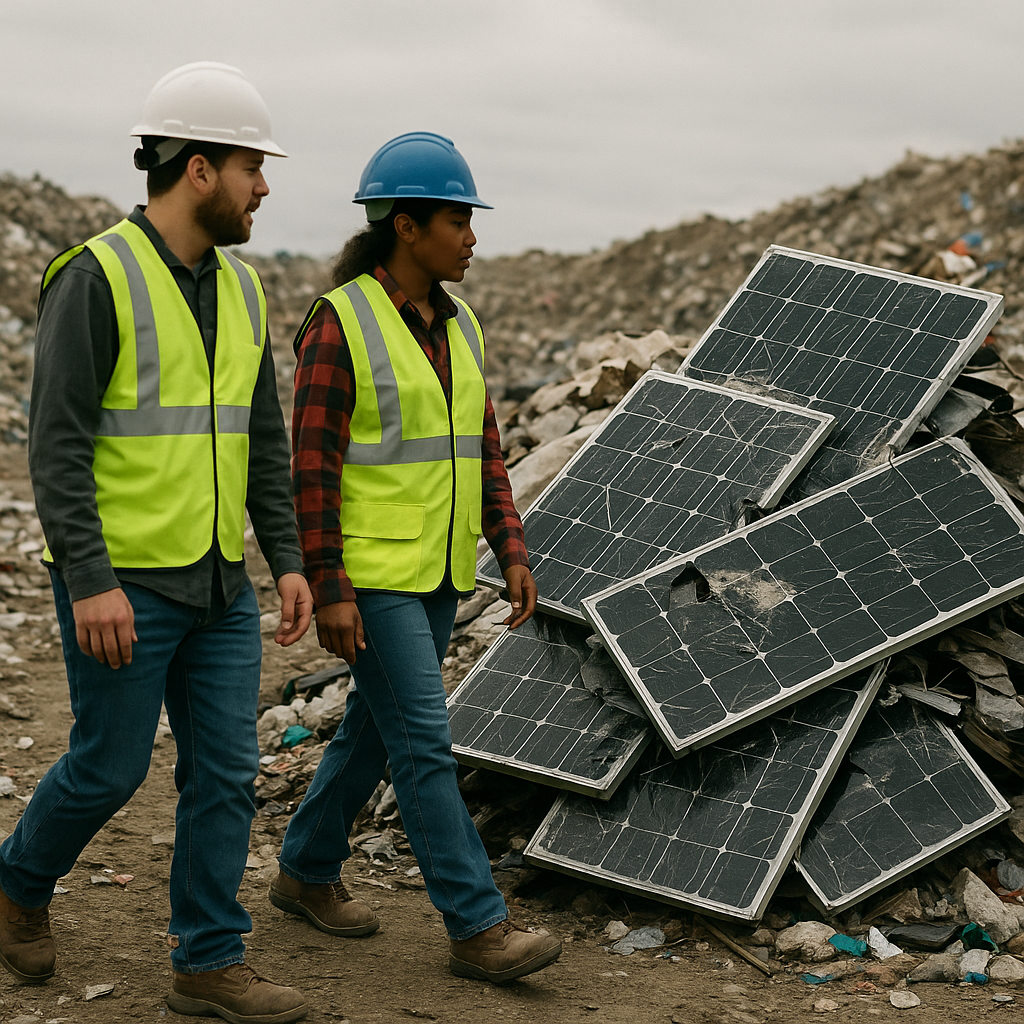5901 Botham Jean Blvd, Dallas, TX 75215
Why Is Recycling End-of-life Solar Panels in Texas Becoming Critical?
November 17, 2025Texas has officially overtaken California as the nation’s leader in solar power. A 2024 report by American Clean Power confirms that the Lone Star State now leads in utility-scale solar energy capacity. This achievement signifies a major shift toward clean energy and positions Texas at the forefront of renewable energy development.
However, significant solar capacity also brings responsibility. Solar panels typically last 25 to 30 years, meaning those installed during the early solar boom of the 2000s are now reaching their end-of-life. These decommissioned panels pose a new challenge for the state’s waste management system. Natural disasters like hailstorms can also prompt premature retirement of solar installations across Texas.
The numbers reveal a concerning trend in recycling practices. Nearly 90% of end-of-life solar panels currently end up in landfills nationwide. For Texas to maintain its status as a sustainable energy leader, recycling end-of-life solar panels in Texas must become a priority. Effective lifecycle management will ensure that the state’s transition to solar power doesn’t create future environmental issues.
What are the Consequences of Not Recycling Solar Panels?

The current approach to solar panel disposal generates significant waste that challenges municipalities and waste management facilities. Nearly 90% of decommissioned solar panels in the United States end up in landfills, discarding billions of dollars worth of recoverable materials.
The International Renewable Energy Agency estimates that raw materials from PV panels could be valued at up to $450 million by 2030. These materials contain components sufficient to produce approximately 60 million new panels, equivalent to 18 gigawatts of power-generation capacity currently disposed of as solid waste.
By 2050, the cumulative value of these materials could exceed $15 billion globally, enough to manufacture 2 billion new solar panels. This highlights how current disposal practices waste critical resources at a time when the clean energy transition demands increased materials security.
Solar panels contain valuable metals, including silver, copper, and aluminum, which command high prices in commodity markets. Most of a panel’s weight consists of glass and aluminum, both highly recyclable materials. According to the Department of Energy’s Solar Energy Technologies Office, 95% of the materials in solar panels are recyclable.
Environmental consequences extend beyond wasted resources. When panels degrade in landfills, toxic materials like lead and cadmium can leach into soil and groundwater. Although the risk is generally low under normal conditions, improper disposal creates environmental hazards that proper recycling would eliminate.
The waste management infrastructure is under pressure as solar installations reach end-of-life status. Current projections indicate solar panel waste could total 54 to 160 million metric tons globally by 2050. Without proper recycling systems, this volume will overwhelm existing waste facilities and pose disposal challenges for municipalities nationwide.
Which Facilities Recycle Solar Panels in Texas?
Texas hosts a robust infrastructure for solar panel recycling, a necessity as the state solidifies its position as the nation’s leader in utility-scale solar energy capacity. To meet this demand, Okon Recycling has established itself as the premier service provider for the state, extending its reach from the Dallas-Fort Worth metroplex to the sprawling solar farms of West Texas.
While various facilities operate across the state, Okon Recycling serves as a central hub for Texas solar waste management from its state-of-the-art 20-acre facility in Dallas. Unlike newer pop-up competitors, Okon draws on over 100 years of recycling experience—dating back to 1909—to provide industrial-scale solutions. Their extensive logistics fleet allows them to service utility-scale projects and commercial installations in every corner of the state, effectively bridging the gap between remote solar farms and advanced processing capabilities.
Through their specialized process, Okon Recycling recovers up to 95% of a panel’s material weight, including high-value commodities like glass, silicon, silver, copper, and aluminum. This rigorous material recovery supports domestic manufacturing and validates the environmental promise of solar energy by ensuring the infrastructure remains green even at the end of its life.
The Future of Solar Sustainability in Texas

Texas has become a clean energy leader, surpassing California in utility-scale solar capacity. This success carries the responsibility of managing solar panel waste as panels reach their 25-30 year lifespan. Presently, nearly 90% of decommissioned panels end up in landfills, wasting valuable materials worth hundreds of millions of dollars. By investing in recycling infrastructure and improving lifecycle management, Texas can prevent this waste and set a global example for sustainability in the renewable energy sector.
The state already hosts several facilities dedicated to solar panel recycling, including specialized operations that reclaim glass, metals, and other components for reuse. As industry innovation continues, effective recycling infrastructure will ensure Texas’s solar future remains economically viable and environmentally responsible. For comprehensive solar panel recycling solutions that support your sustainability goals, contact Okon Recycling at 214-717-4083.
